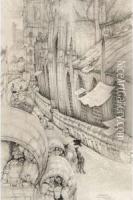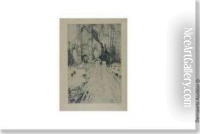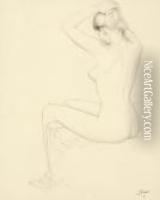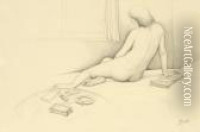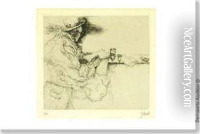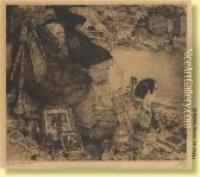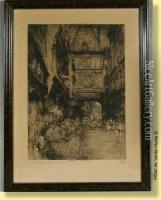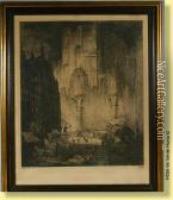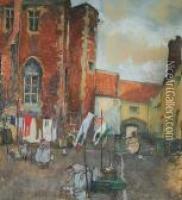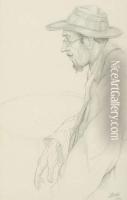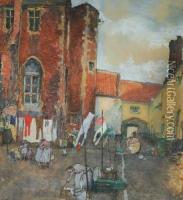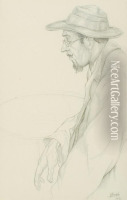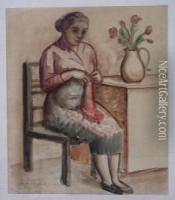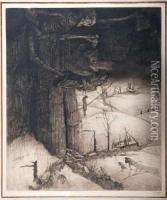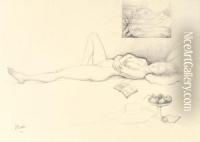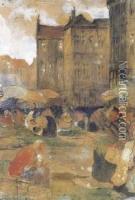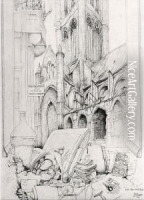Jules De Bruycker Paintings
Jules De Bruycker was a Belgian etcher and painter, best known for his depictions of urban life in his hometown of Ghent. Born on March 9, 1870, in Ghent, Belgium, De Bruycker was initially trained by his father, who was an architect. He later attended the Royal Academy of Fine Arts in Ghent, where he studied under Jean Delvin.
During his early career, De Bruycker focused on painting, but he eventually became more fascinated with etching, which would become his primary medium. His works often portrayed the bustling streets, historic buildings, and local characters of Ghent, capturing the spirit of the city through his detailed and atmospheric etchings. De Bruycker's style was influenced by the work of James Ensor, and he shared Ensor's interest in the portrayal of crowds and the vibrancy of city life.
De Bruycker achieved recognition during his lifetime, and his work was exhibited in several European countries, including Belgium, France, and Germany. He was also a member of various artistic societies, through which he promoted his art and interacted with other artists. Despite the recognition, he remained deeply attached to Ghent, which continued to inspire the majority of his oeuvre.
During World War I, De Bruycker's work reflected the hardships and the impact of the war on the civilian population. His etchings from this period are marked by a sense of melancholy and the portrayal of the resilience of ordinary people in the face of adversity.
Jules De Bruycker never married and led a reclusive life, dedicated to his art. He passed away on September 5, 1945, in Ghent. Today, his works are considered important for their historical value and for their artistic merit, providing insight into the urban landscape and society of early 20th-century Belgium. His etchings remain highly collectible and are featured in various museums and private collections around the world.
